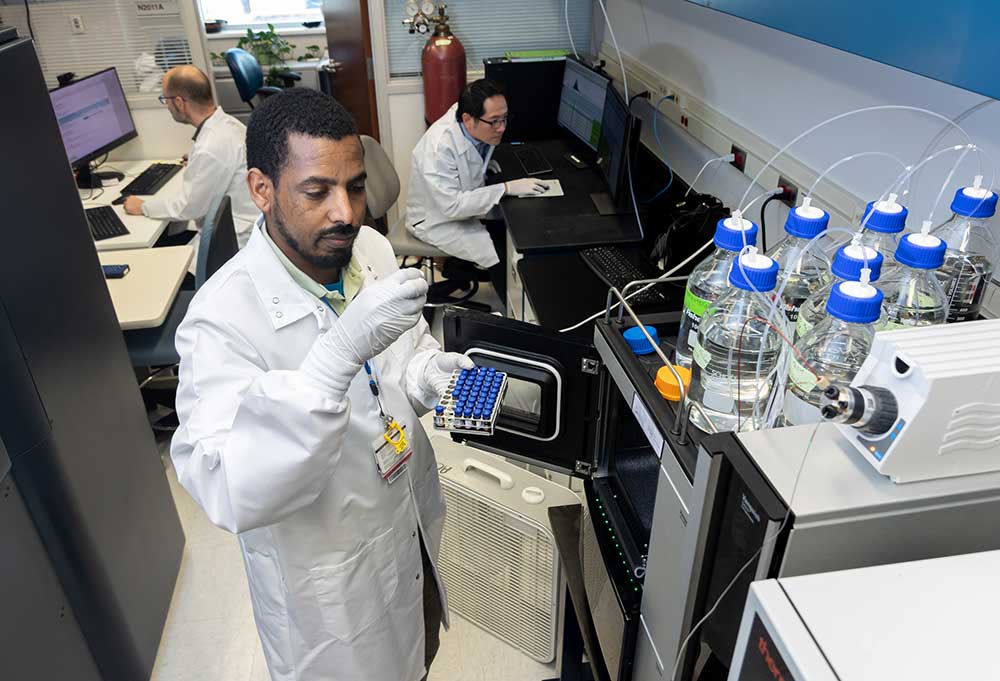GIVE NOW before 2025 ends—your gift will be doubled to help children in need. Click here to 2x your impact!

Ranked nationally in pediatric care.
Arkansas Children's provides right-sized care for your child. U.S. News & World Report has ranked Arkansas Children's in seven specialties for 2025-2026.

It's easier than ever to sign up for MyChart.
Sign up online to quickly and easily manage your child's medical information and connect with us whenever you need.

We're focused on improving child health through exceptional patient care, groundbreaking research, continuing education, and outreach and prevention.

When it comes to your child, every emergency is a big deal.
Our ERs are staffed 24/7 with doctors, nurses and staff who know kids best – all trained to deliver right-sized care for your child in a safe environment.

Arkansas Children's provides right-sized care for your child. U.S. News & World Report has ranked Arkansas Children's in seven specialties for 2025-2026.

Looking for resources for your family?
Find health tips, patient stories, and news you can use to champion children.

Support from the comfort of your home.
Our flu resources and education information help parents and families provide effective care at home.

Children are at the center of everything we do.
We are dedicated to caring for children, allowing us to uniquely shape the landscape of pediatric care in Arkansas.

Transforming discovery to care.
Our researchers are driven by their limitless curiosity to discover new and better ways to make these children better today and healthier tomorrow.

We're focused on improving child health through exceptional patient care, groundbreaking research, continuing education, and outreach and prevention.

Then we're looking for you! Work at a place where you can change lives...including your own.

When you give to Arkansas Children's, you help deliver on our promise of a better today and a healthier tomorrow for the children of Arkansas and beyond

Become a volunteer at Arkansas Children's.
The gift of time is one of the most precious gifts you can give. You can make a difference in the life of a sick child.

Join our Grassroots Organization
Support and participate in this advocacy effort on behalf of Arkansas’ youth and our organization.

Learn How We Transform Discovery to Care
Scientific discoveries lead us to new and better ways to care for children.

Learn How We Transform Discovery to Care
Scientific discoveries lead us to new and better ways to care for children.

Learn How We Transform Discovery to Care
Scientific discoveries lead us to new and better ways to care for children.

Learn How We Transform Discovery to Care
Scientific discoveries lead us to new and better ways to care for children.

Learn How We Transform Discovery to Care
Scientific discoveries lead us to new and better ways to care for children.

Learn How We Transform Discovery to Care
Scientific discoveries lead us to new and better ways to care for children.

When you give to Arkansas Children’s, you help deliver on our promise of a better today and a healthier tomorrow for the children of Arkansas and beyond.

Your volunteer efforts are very important to Arkansas Children's. Consider additional ways to help our patients and families.

Join one of our volunteer groups.
There are many ways to get involved to champion children statewide.

Make a positive impact on children through philanthropy.
The generosity of our supporters allows Arkansas Children's to deliver on our promise of making children better today and a healthier tomorrow.

Read and watch heart-warming, inspirational stories from the patients of Arkansas Children’s.

Hello.

Arkansas Children's Hospital
General Information 501-364-1100
Arkansas Children's Northwest
General Information 479-725-6800

Slow Flow Vascular Malformations
Vessels responsible for draining fluid from our bodies (blood or lymphatic fluid) develop abnormally. The result is that instead of tubes and pipes, they form sponges or small cysts, called vascular malformations. The most common slow-flow vascular malformations are lymphatic malformations and venous malformations.
Symptoms
Slow Flow Vascular Malformations are usually at birth or in early childhood. Venous malformations sometimes cause a blue/purple discoloration and bulging if they are near the skin surface. Deeper (possibly within a muscle group) malformations may not be visible and are typically only diagnosed following advanced imaging.
Signs of malformations include:
- Pain - often due to clotting of blood in the abnormal
- Spongy tissue
- Swelling
- Lymphatic malformations appear suddenly and increase in size within hours -- indicating that fragile walls have bled.
Diagnosis
Ultrasound and MRI are the most commonly used tools to diagnose vascular malformations. A biopsy is rarely needed in centers specializing in vascular malformations, but many facilities choose to biopsy for further confirmation, given their rarity.
Treatment
Most vascular malformations benefit from sclerotherapy, and this is often the first line of treatment. Some malformations may benefit from surgical resection, and usually, medical-grade glue is injected into the malformation before surgery. Medical treatment is also increasingly shown to have a synergistic benefit with procedures.
Related Content
-
Magnetic Resonance Imaging (MRI)
A MRI is a test that uses a large magnet, radio waves, and a computer to take pictures of the inside of the body.
-
Sclerotherapy
Sclerotherapy involves injecting a medication into a vascular malformation, which causes them to shrink.
-
Ultrasound
An ultrasound is a test that uses sound waves to show pictures of the inside of the body.
-
Vascular Anomalies Center of Excellence
Our Vascular Anomalies Center of Excellence provides comprehensive care to children and adults with congenital vascular anomalies.

